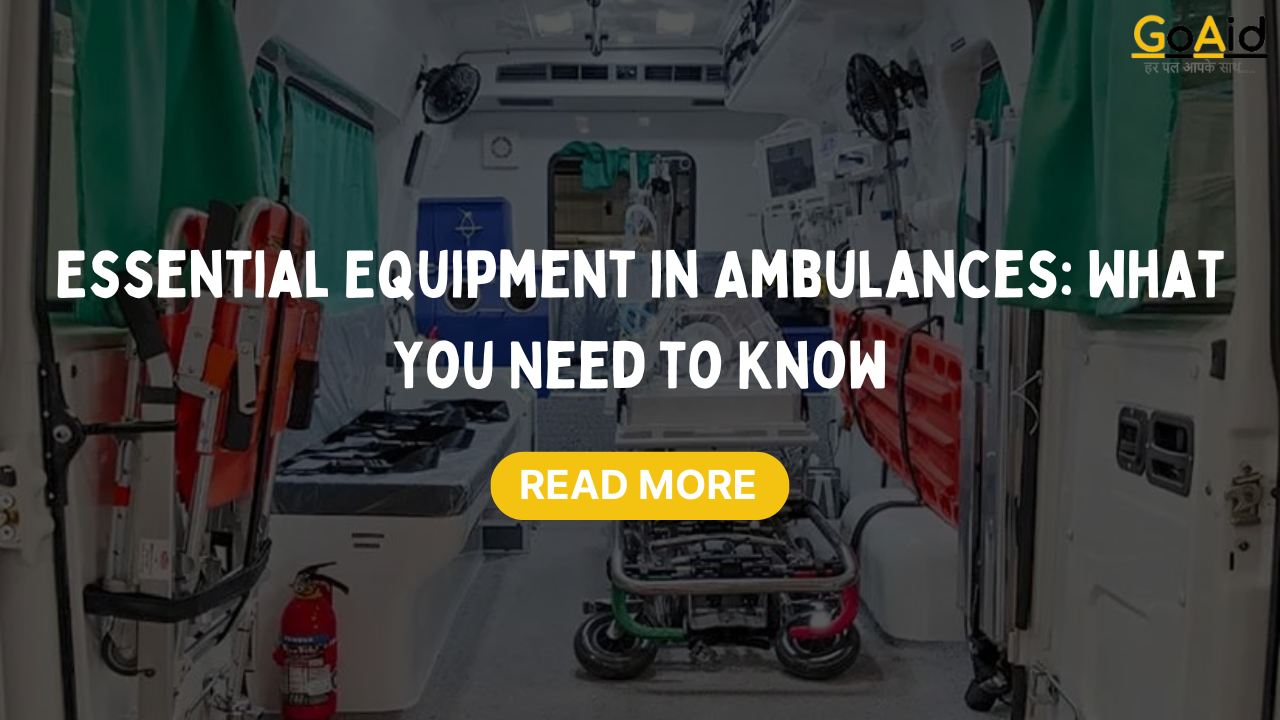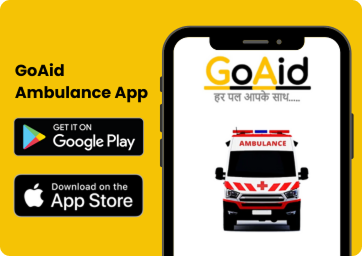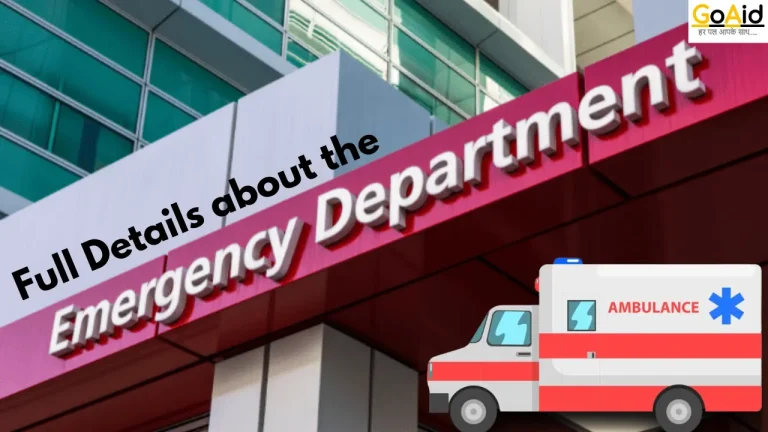In India, or any part of the world, if you are accessible with an ambulance, then you must have thought what are the Essential Equipment in Ambulances? Even knowing about the Essential Equipment in Ambulances is crucial for those who are about to use an ambulance for their medical emergencies.
If you are also one of those people who wants to know about Essential Equipment in Ambulances, then read our blog to the end, and in the end, youŌĆÖll be aware of the equipment that is essential to the ambulances.
So, letŌĆÖs start-
What are Essential and Non-Essential Equipment in the Ambulance?
Essential Equipment in Ambulances:
In emergency medical care, certain equipment is indispensable for providing immediate assistance and stabilizing patients. Essential equipment such as defibrillators, oxygen supplies, and IV supplies are vital tools used by ambulance personnel to address critical conditions and ensure the best possible outcomes for patients.
- Defibrillator: Essential for managing cardiac emergencies.
- Oxygen supply: Crucial for treating respiratory distress.
- ECG monitor: Essential for monitoring cardiac activity.
- Suction unit: Vital for maintaining clear airways.
- IV supplies: Essential for administering medications and fluids.
- First aid kit: Essential for immediate treatment of injuries.
- Spinal board: Essential for immobilizing spine injuries.
- Stretcher: Essential for patient transport.
- Medication box: Essential for administering medications.
- Personal protective equipment (PPE): Essential for infection control.
Non-Essential Equipment in Ambulances:
While essential equipment forms the backbone of emergency medical care, ambulances may also carry non-essential equipment that enhances patient comfort or aids in specific situations. These items, such as portable nebulizers, burn treatment supplies, and glucose meters, provide additional support but are not indispensable for addressing immediate life-threatening emergencies.
- Portable nebulizer: Useful but not essential for emergency care.
- Burn treatment supplies: Helpful for managing burns but not always required.
- Glucose meter: Useful for diabetic emergencies but not always needed.
- Emergency childbirth kit: Important for obstetric emergencies but less common.
- Extra blankets: Helpful for patient comfort but not essential for emergency care.
- Blood pressure cuff: Useful for monitoring but only sometimes crucial in every situation.
- Thermometer: Helpful for assessing patient condition but not always necessary.
- Splints: Useful for immobilization but may not be needed in all cases.
- Portable radio: Useful for communication but not essential with modern communication systems.
- Trauma shears: Helpful for cutting clothing but not always required for patient care.
Objectives of Essential Equipment
These are the top 5 objectives of Essential Equipment for Ambulances:
1. Immediate Intervention
Essential equipment enables ambulance personnel to intervene promptly in critical emergencies, such as cardiac arrest or respiratory distress, minimizing the risk of adverse outcomes and improving patient survival rates.
2. Stabilization
Essential equipment helps stabilize patients’ conditions during transport, reducing the risk of further deterioration and ensuring a safe transition to definitive medical care at hospitals or healthcare facilities.
3. Monitoring
Vital for patient care, essential equipment continuously monitors vital signs and cardiac activity, providing crucial data for assessing the patient’s condition and guiding appropriate medical interventions throughout the journey.
4. Life Support
Essential equipment is the cornerstone of emergency care that delivers life-saving treatments like oxygen therapy, defibrillation, and intravenous medications, ensuring patients receive immediate and effective interventions to sustain life until they reach definitive medical care.
5. Safety
Essential equipment prioritizes the safety of both patients and ambulance personnel by providing tools for maintaining clear airways, immobilizing injuries, and preventing cross-contamination, fostering a secure and controlled environment for emergency medical interventions.
What are Essential Equipment that can be found in Ambulances?
Generally, an ambulance is equipped with a variety of essential medical tools and devices to provide immediate care during emergencies. These tools help the ambulance service and their paramedics to handle the medical emergency on the spot for a bit of time, though they can reach the hospital by making the patient stabilized till that time. We have enlisted around 20 essential pieces of equipment that can be found in ambulance services. These include:
- Defibrillator: Used to deliver an electric shock to the heart in cases of life-threatening cardiac arrhythmias.
- Oxygen Supply: Provides supplemental oxygen to patients with respiratory distress or low oxygen levels.
- Ventilator: Assists or controls breathing for patients who cannot breathe adequately on their own.
- Suction Unit: Removes obstructions like blood, vomit, or secretions from a patientŌĆÖs airway.
- ECG Monitor: Monitors and records the electrical activity of the heart to detect abnormalities.
- Spinal Board: Immobilizes patients with suspected spinal injuries during transport.
- Stretcher: Transports patients safely and comfortably from the scene to the ambulance.
- First Aid Kit: Contains basic medical supplies for treating minor injuries and providing initial care.
- IV Supplies: Used to administer fluids, medications, and nutrients directly into a patient’s bloodstream.
- Medication Box: Stores essential medications for various emergency treatments.
- Pulse Oximeter: Measures the oxygen saturation level in a patientŌĆÖs blood.
- Splints: Immobilizes broken or injured limbs to prevent further injury.
- Bandages and Dressings: Used to cover wounds, control bleeding, and prevent infection.
- Blood Pressure Cuff: Measures a patientŌĆÖs blood pressure to assess cardiovascular health.
- Thermometer: Measures body temperature to detect fever or hypothermia.
- Personal Protective Equipment (PPE): Protects healthcare providers from exposure to infectious agents.
- Burn Treatment Supplies: Treats and covers burn injuries to prevent infection and manage pain.
- Glucose Meter: Measures blood sugar levels in patients with diabetes or suspected hypoglycemia.
- Portable Nebulizer: Delivers aerosolized medication to patients with respiratory conditions like asthma.
- Emergency Childbirth Kit: Contains supplies for assisting with childbirth in emergencies.
Significance of Essential Equipment in Ambulance
These are the key significances of Essential Equipments in Ambulance
- Rapid Intervention: Essential equipment enables swift intervention in critical situations, crucial for improving patient outcomes and reducing morbidity and mortality rates.
- Versatility: These tools are versatile, catering to a wide range of medical emergencies, from cardiac arrest to trauma, ensuring comprehensive care for diverse patient needs.
- Emergency Preparedness: Equipped with essential tools, ambulances are ready to respond to emergencies at a moment’s notice, providing reassurance to communities and bolstering emergency preparedness efforts.
- Standardized Care: Essential equipment promotes standardized care protocols, ensuring consistency in emergency medical treatment and enhancing the quality of care delivered to patients.
- Improved Patient Transport: By stabilizing patients and monitoring vital signs, essential equipment facilitates safer and more effective patient transport, minimizing the risk of complications during transit.
- Timely Diagnosis: Advanced monitoring devices aid in the timely diagnosis of critical conditions, enabling early intervention and preventing the progression of potentially life-threatening emergencies.
- Enhanced Resuscitation: Equipment such as defibrillators and airway management tools play a pivotal role in resuscitation efforts, increasing the likelihood of successful outcomes in cardiac arrest cases.
- Resource Optimization: By equipping ambulances with essential tools, resources are optimized, ensuring efficient use of time and personnel and maximizing the effectiveness of emergency medical services.
- Reduced Hospitalization: Effective use of essential equipment can lead to better patient outcomes, potentially reducing the need for prolonged hospitalization and minimizing healthcare costs.
- Community Safety Net: Serving as a critical component of the healthcare safety net, essential equipment in ambulances ensures that individuals in need of urgent medical attention receive timely and appropriate care, contributing to overall community health and well-being.
Conclusion
In conclusion, understanding the significance of essential equipment in ambulances is crucial. We’ve shed light on its pivotal role in delivering prompt and effective emergency medical care. These tools form the backbone of ambulance services, enabling rapid intervention, standardized care, and improved patient outcomes.
By equipping ambulances with versatile and vital equipment, communities benefit from enhanced emergency preparedness and a reliable healthcare safety net. We’ve provided comprehensive insights into these essential tools, ensuring clarity on their significance in emergency medical services. Should you have any queries or seek further information, please feel free to ask in the comment box below.
















